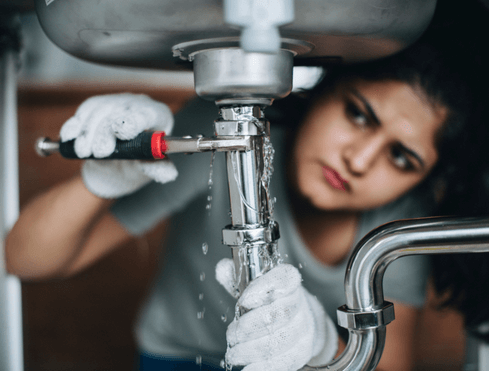How to keep things flowing beautifully at home
Did you know that the earliest copper piping dates from an Egyptian pyramid built 4,500 years ago? Since plumbing has been around so long, it’s no wonder we take it for granted — until it stops flowing or springs a leak. Thankfully, there are some plumbing maintenance tips that can help you avoid these unpleasant surprises.
We’ll tell you how to prepare for a plumbing emergency, do regular maintenance and winter-proof your pipes. These tips can help you prevent plumbing problems and protect your home from water damage.
Of course, even with good maintenance there's still the risk of plumbing problems springing up. To protect yourself from the worst, you might want to consider taking out plumbing and drainage cover.
Know what to do in a plumbing emergency
Imagine this: you wake up at 4am to the sound of running water. Did you leave the tap on? No — a pipe has sprung a leak overnight. Water is going everywhere at an alarming rate. You want to stop it as soon as possible — but you don’t know how.
Simply put, getting a little information now can save you a lot of stress in an emergency. Here are the key things you need to know.
Know how to turn off the water
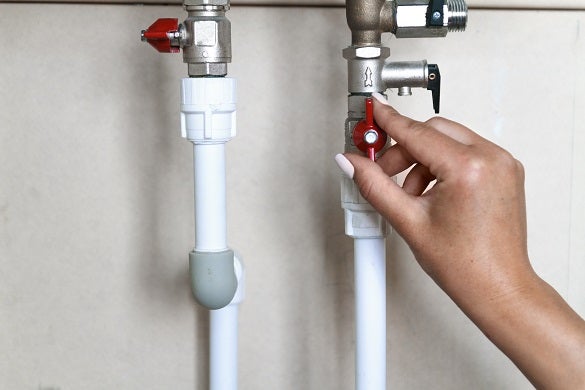
First, you need to know where your home’s stop valve is (also known as a stopcock or stop tap). This is usually found under the kitchen sink. Otherwise, check your airing cupboard, under the stairs or floorboards, near the front door, or in a garage, utility room, bathroom or cellar.
Your home may also have stop valves for particular rooms or areas of the building. These will let you keep using the water in the rest of the house.
For flats, there may be a communal inside stop valve where the water supply enters the building.
Know how to stop your toilet overflowing
The water pipe to your toilet should have a shut off valve. This might have a handle, in which case you’ll shut it by turning it clockwise. Otherwise, there will be a metal valve with a screw for a flat-head screwdriver. To close it, turn it so the slot on the screw is no longer in line with the direction of the pipe.
Do regular plumbing maintenance
Maintenance is all about reducing wear and tear, and spotting issues before they can cause damage. That’s why a few simple actions, done regularly, are the best way to prevent plumbing problems.
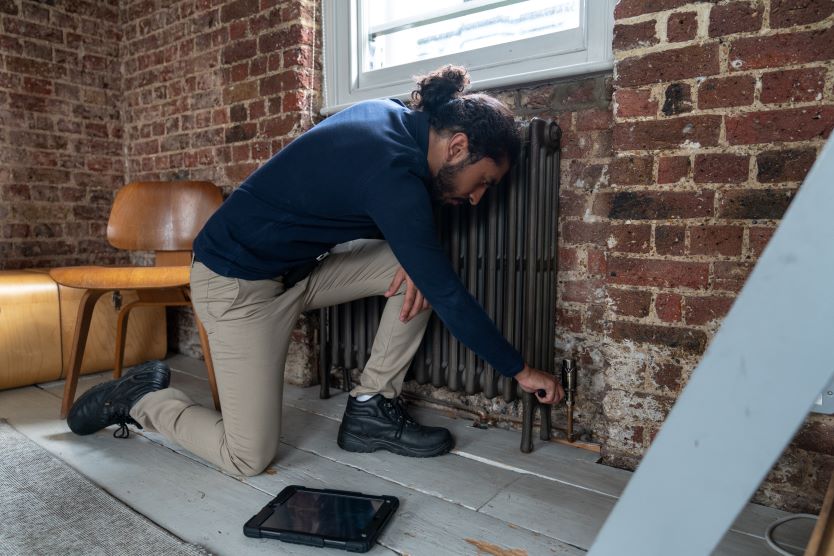
Check your stop valves work
At least once a year, it’s good to remind yourself of where your home’s stop valves are. While you’re at it, check that they work as they should. If they don’t turn, don’t work, or leak when you use them, you can get them repaired or replaced.
Test your water pressure
Low water pressure means your water comes out too slowly, while high water pressure can damage your plumbing. If you have a pressure gauge, you can measure this exactly. Otherwise, you can get an idea by measuring the water flow rate. A flow of 10 litres per minute is okay, while 15 litres and above is considered good.
It’s easy to check your water flow rate with just a 1 litre bottle and a timer. First, turn off any taps and appliances that use water. Then put the 1 litre bottle under the tap and turn the tap on full. With the timer, measure how long it takes the bottle to fill up. Anything longer than 6 seconds is a low water flow rate.
Some causes of low water pressure are:
- High water use at particular times of day
- Blocked or narrow pipes
- Clogged appliances
- The stop valve being partly closed
- Not enough height between your shower and water tank
Depending on the causes, you may need to get some pipes cleaned or replaced or install a shower pump.
High water pressure is a much less common problem than low water pressure. Some of the signs to look out for are:
- Noisy pipes
- Toilet running constantly
- Taps dripping when turned off
- Hot water running out very quickly
If you have high water pressure, it’s best to get a plumber round. They’ll likely install a valve called a water pressure regulator, which is a simple job for a professional.
Clean your shower head
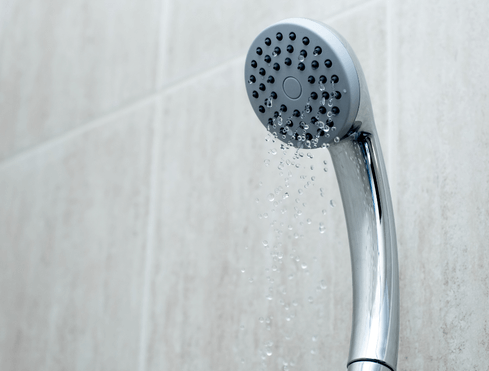
Limescale will build up in your shower over time, especially if you live in an area with hard water. This can lead to weaker flow and water spraying off in odd directions.
All you need to fix this is some white vinegar and a scrubbing brush. Unscrew the shower head and put it in a container of vinegar overnight. That will loosen up the limescale so you can scrub and rinse it clean the next day.
Check for leaks regularly
By catching a leak when it’s just a dribble, you can stop it becoming something worse. Leaks can come from broken seals, clogged pipes, corrosion, damaged joints, high water pressure and changes in the air temperature. As well as checking all the pipes you can see, look out for:
- Signs of moisture around sinks, appliances and radiators
- Toilet tank leaks — test for these by putting food colouring in the tank and waiting to see if it appears in the toilet bowl
Prepare for winter
Winter is a time when hot water is a must, and also when plumbing issues often arise. So it pays to get your plumbing ready for what the cold weather brings.
Prevent frozen pipes
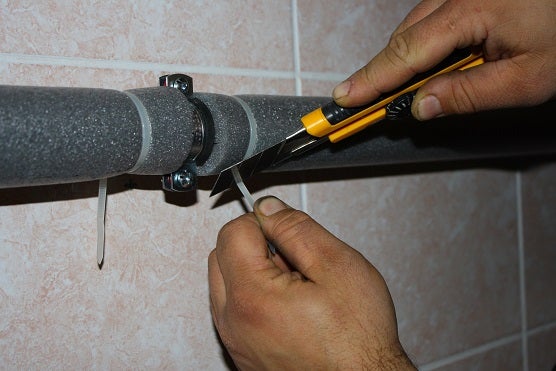
When the mercury drops below 0, there’s a chance that any pipes exposed to the cold will freeze. Here are a few things you can do to stop pipes freezing:
- Put foam insulation (lagging) around exposed pipes.
- Disconnect and drain outside taps before cold weather hits.
- Keep an eye on plumbing in unheated spaces like lofts and garages.
- Fix dripping taps quickly, because even a trickle can freeze up the pipe.
- Get your boiler serviced.
- Don’t turn the heating off completely if you go away.
Try to stop draughts coming from outside or from unheated spaces.
What to do if your pipes have frozen
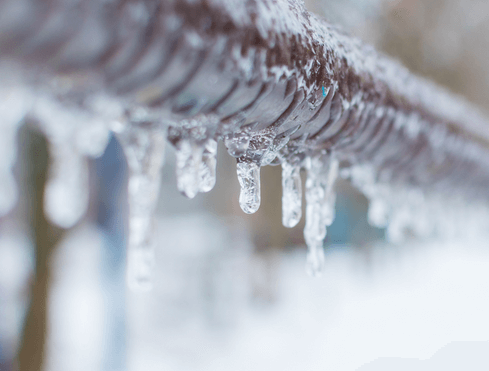
If your pipes freeze, how will you know? You’ll probably notice things like:
- No water, or just a trickle from the affected pipes
- Frost visible on the surface of the tap or pipe
- A bad smell coming from the sink, drain or tap
In this situation, you need to thaw out the pipes to stop them bursting. This is often something you can do yourself:
- First, use your stop valve to turn off the water.
- Turn your taps on to let pressure out as the pipes thaw.
- Use a hair dryer to slowly melt the water in the frozen pipes.
Never use an open flame to thaw pipes, as this can damage the pipe and risks causing a fire. Fore more information, check out our blog on how to fix frozen water pipes.
What to do if a pipe has burst
A burst pipe may sound like a disaster, but by acting fast you can stop the worst. Here’s what you need to do:
- Use your stop valve to turn off the water supply.
- If the stop valve hasn’t stopped the flow, it’s probably coming from your cold water storage. This means you’ll need to drain the cold water storage tank, which is usually in the roof space.
If these actions didn’t stop the flow, you’ll need an emergency plumber.
We hope these plumbing maintenance tips have shown that it isn’t much effort to keep everything flowing. If you’re keen to get plumbing issues solved with minimum stress, you can look into plumbing and drainage cover.
Our blog is loaded with more related articles
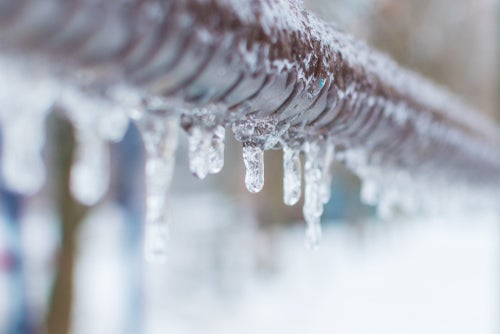
Plumbing and heating tips
How to prevent and fix frozen water pipes
Unfortunately, the drop in temperature means you might have another thing to add to your to-do list: sorting out frozen water p...
Read more
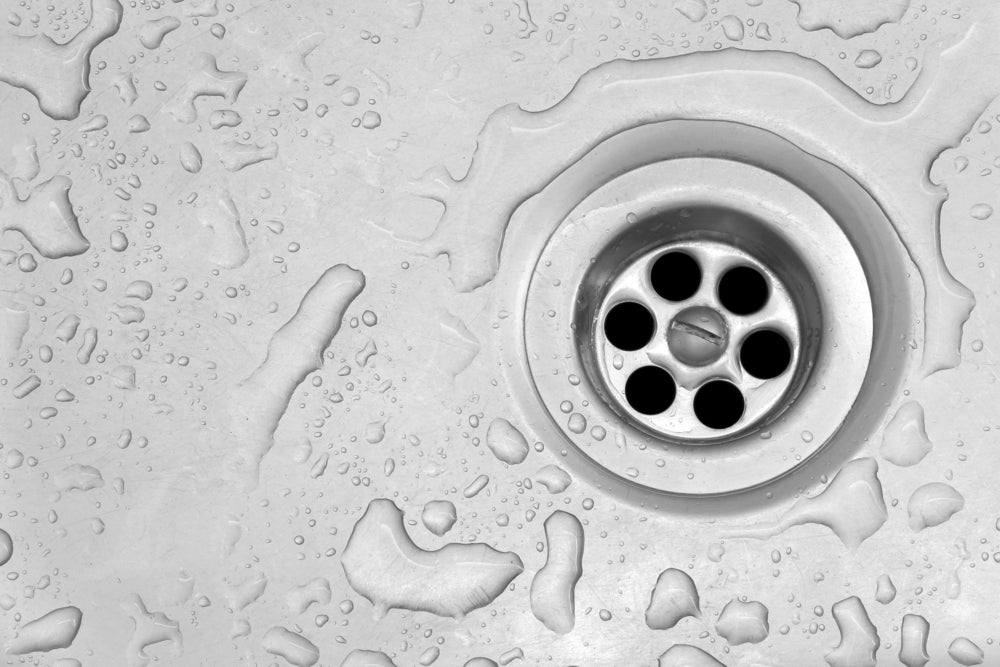
Plumbing and heating tips
How to unblock your drains
Blocked drains can cause more serious problems if not dealt with in good time. Find out how to unblock your drains and prevent...
Read more

Plumbing and heating tips
Heating not coming on? There could be a simple fix...
It’s that time of year again, one of the busiest for heating engineers, when people start to turn their heating on after...
Read more
